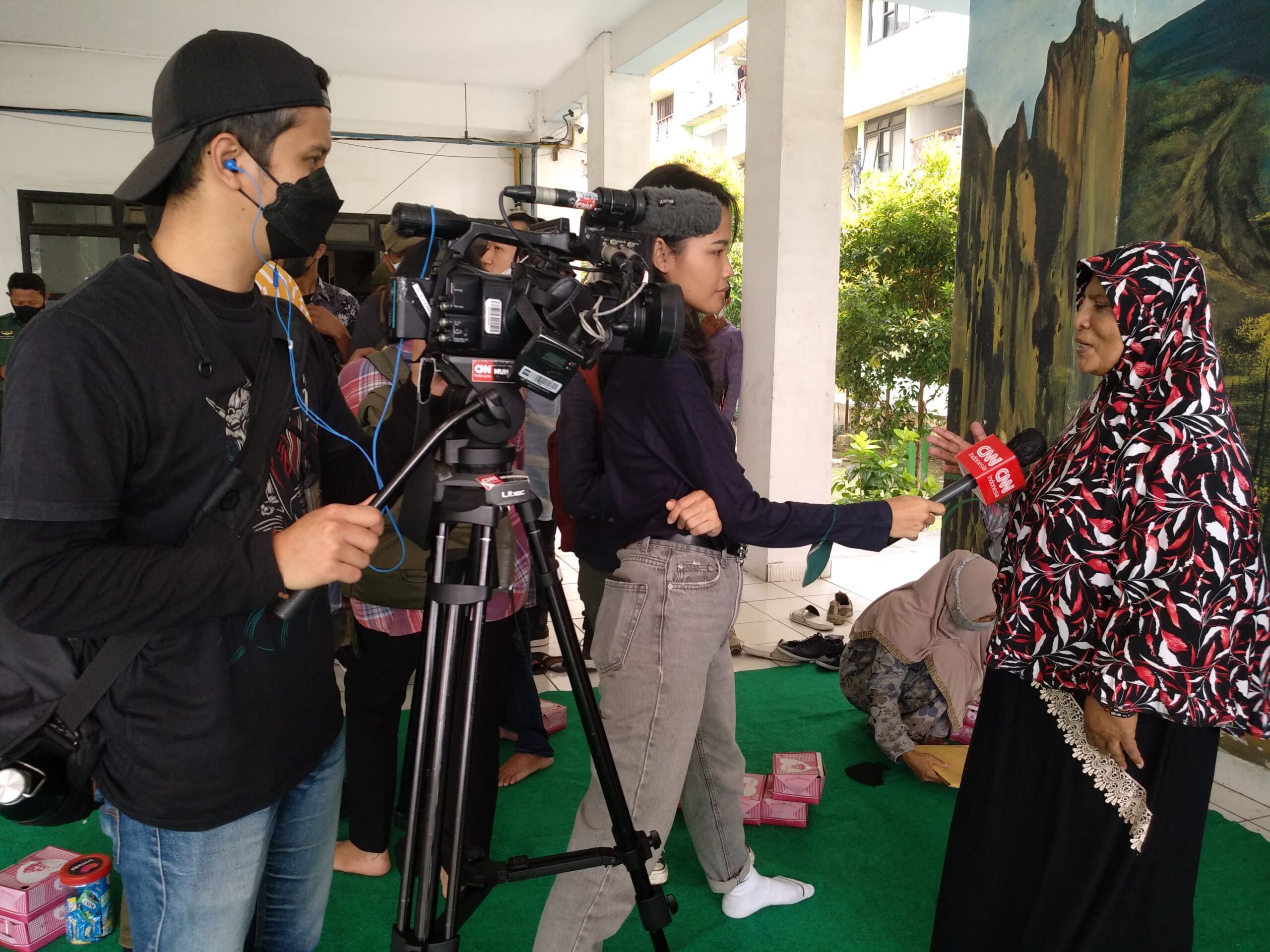Journalists in Jakarta dive deeper into the sources of air pollution in Jakarta, its impacts on communities, and how to frame air pollution story with human interest angle.
Worldwide, air pollution is one of the biggest environmental threats to human life. The World Health Organization (WHO) estimates that 7 million people die every year due to indoor and outdoor air pollution, and that 99% of the global population lives in places where the WHO air quality guidelines levels are not met.
To learn more about the causes and impacts of air pollution – and how to report on it more effectively, 26 journalists from Jakarta, Indonesia, attended a media workshop on air pollution in Jakarta from August 2-4.
The training, entitled “Air Pollution in Jakarta: Sources and impacts”, was organized by Internews’ Earth Journalism Network (EJN) and the global Clean Air Catalyst project consortium, funded by the United State Agency for International Development (USAID).
The journalists – both full-time and freelance – represented 25 local and leading national media organizations including broadcast television, business dailies, data journalism portals, radio stations and environmental magazines. More than half the participants were women.
The three-day workshop featured trainers and speakers from the Clean Air Catalyst consortium, including Dinas Lingkungan Hidup (DLH), the government-owned environmental services in Jakarta; USAID Indonesia; and Remotivi, a research organization studying the depth and spread of misinformation related to air quality in Jakarta.
Muhammad Shidiq of World Resources Institute (WRI) presented on the Clean Air Catalyst project, its goals and its vision, while Ginanjar Syuhada of Vital Strategies spoke about the health impacts of air pollution on local populations. Cynthia Maharani, gender equality expert at WRI, discussed the gendered effects of poor air quality, explaining how women and children are more vulnerable to air pollution.
Amy Sim, Senior Asia Program Manager at EJN, presented the findings of the Information Ecosystem Assessment study EJN conducted in 2021 to determine what kind of air pollution-related information citizens of Jakarta want, where they get it, and which information sources they trust.
“Journalists in Jakarta are generally aware of the fact that air pollution is a growing environmental and health challenge in the city. But they rarely get a chance to discuss this openly with science, data and health experts who are working on air quality,” said Stella Paul, Clean Air Catalyst project manager at EJN.
At the workshop, journalists had the opportunity to ask questions of issue experts as well as officials from the local government. In addition, journalists went on a day-long visit to one of the city’s heavily polluted areas and interacted with the community members including women and the elderly to learn more about their struggles against air pollution.
Here’s a recap of the workshop and field trip in photos:







Before they dispersed, journalists agreed to keep in touch with each other after the workshop and exchanged contact details. They continue to share information and collaborate on a WhatsApp group that was created to facilitate communication during the workshop.
Wulan Kusuma Wardhani, a journalist-participant from Jakarta Post, one of the largest news dailies in Indonesia, said that although she lived in Jakarta, this was the very first time she was learning about air pollution. “Until now, I used to think that air pollution was a very difficult subject to report on because it’s very technical. However, at the workshop, the experts really explained it in a language that was easy to understand, and I didn’t have any difficulty. So, I gained quite a bit of knowledge from this workshop about air pollution.”
Another participant, Karensa Putri of Plus Jakarta, said her biggest takeaway was interacting with local communities in Marunda and learning what it was really like to live in a polluted area. “I had heard of PM 5, PM 10 so many times but had no idea what it meant to inhale air that has such a high concentration of particles. When I heard the women in Marunda explaining how it is causing skin rashes and breathing difficulties, I realized how serious air pollution really is and how important it is to report on this issue,” she said.
Journalists who participated in the workshop will soon have the opportunity to apply for story grants to report on air pollution. Look out for their stories on the EJN website in upcoming months.
